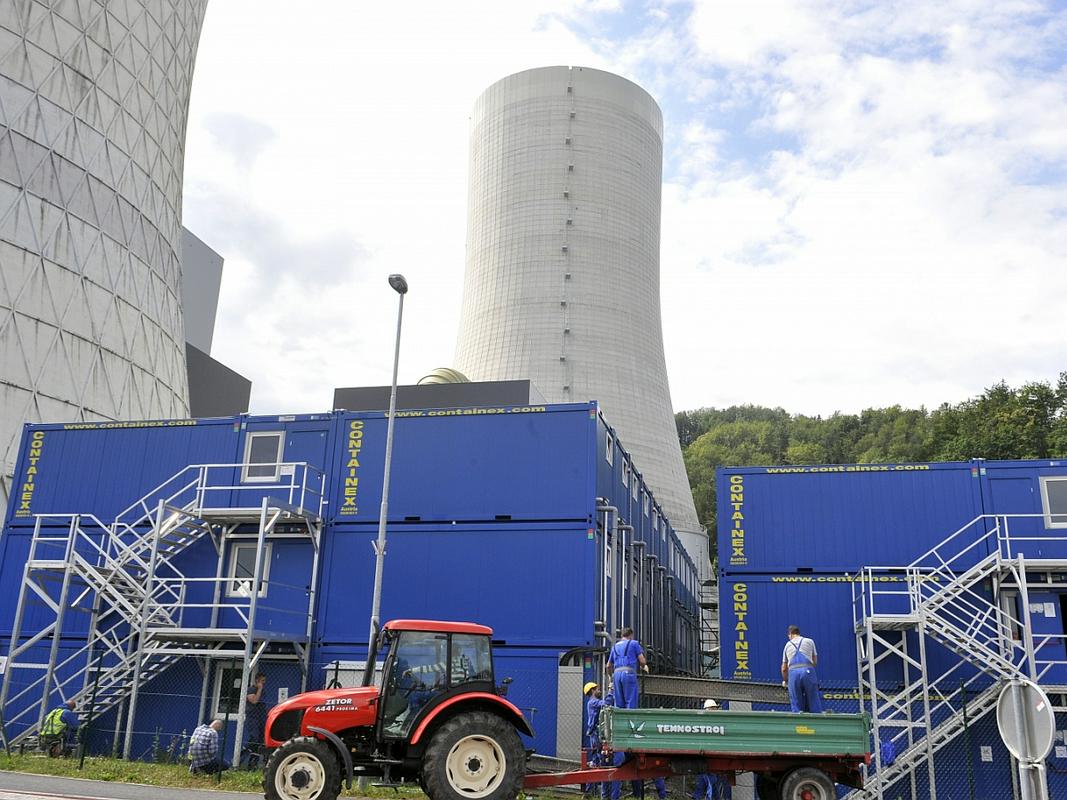
Although starting up the new generator will still take a few months, the construction of the sixth generator at the thermoelectric power station in Šoštanj is nearing its end. That can be said after the first heat tests, and after the start of the first heating of the boiler, which is one of the many steps in preparing Teš 6 to become fully operational.
The burners were first ignited with heating oil. Next week the plan is to gradually start using coal. Tests on the boiler installations will continue in the next two months. In September Teš announces that it will test the turbine installations.
Its first synchronization with Slovenia's electricity power network is planned for the beginning of October 2014. A condition for that is that the generator passes all its tests successfully. The full trial period will run until the 26th of June next year.
An inconvenient time for starting up the billion euro investment
In the coming years and decades the sixth generator at the Šoštanj thermoelectric power station will considerably help Slovenia on its path to become energy independent. It will also be more cost-efficient than the older fourth and fifth generators. Despite the opinions of environmentalists regarding the construction of the coal-fired power plant in a time of transition towards a low-carbon society, the new generator will also be kinder to the environment than the older units.
However when it comes to this costly overblown investment, there is the question of profitability. In addition there is also a concern regarding the possibilities of capitalizing the 440 million euro state guarantee. The most expensive energy project in the country's history, which will supply Slovenia with a third of its needs for electricity, is preparing to start operating at a very inconvenient time when electricity prices have reached a record low.
"Only" 50 million euros of loss in the first year
The price of coal, which the power plant will pay to its supplier Premogovnik Velenje, will also be higher than the originally agreed 2,25 euros per gigajoule – which was considered a decent price. On top of that next year Teš will have to start paying back around 100 million euros of debt every year. Evidently in the first years the power plant won't be able to count on any profit. And according to the chairman of the electricity transmission systems operator Eles, Aleksander Mervar, when making predictions one has to take into account the whole Teš company.
"We have to realize that Unit 3 isn't working, Unit 4 will stop operating, and Unit 5 will only produce one terawatt hour per year. And if we take all that into consideration, I think that in 2015 the loss won't be less than 50 million euros," said Mervar.
Economy in a Slovenian way?
The predicted price for one megawatt hour of electricity from Teš 6 will surely be higher than the present market prices. "Whether there will be a profit or a loss will depend on what kind of prices Teš 6 will be able to achieve. And saying that, those prices won't be like the ones at the Leipzig energy exchange market, but internal prices in force within the HSE Group," assesses Maks Tajnikar from the Faculty of Economics.
Of course in the future we can also expect a rise in the demand for electricity that would lead to higher prices and a greater demand and wish for energy independence. But what about the costs of Teš from an environmental point of view?
Climatologist Lučka Kajfež Bogataj says the key thing is whether the fourth and fifth generators will really stop operating: "That's the big question mark, and all of Teš's economic calculations are quiet about it. And that seems very wrong to me. The only possible progress would be if only Teš 6 becomes operational, and if it would operate only on domestic coal."
Time will give us the answer regarding the investment's profitability. However a lot will also depend on the country's politics, which will have to draw up a clearer plan for Slovenia's supply of energy.
A. Č., Petra Kos Gnamuš, Erna Strniša, Radio Slovenija; translated by K. J.

































































